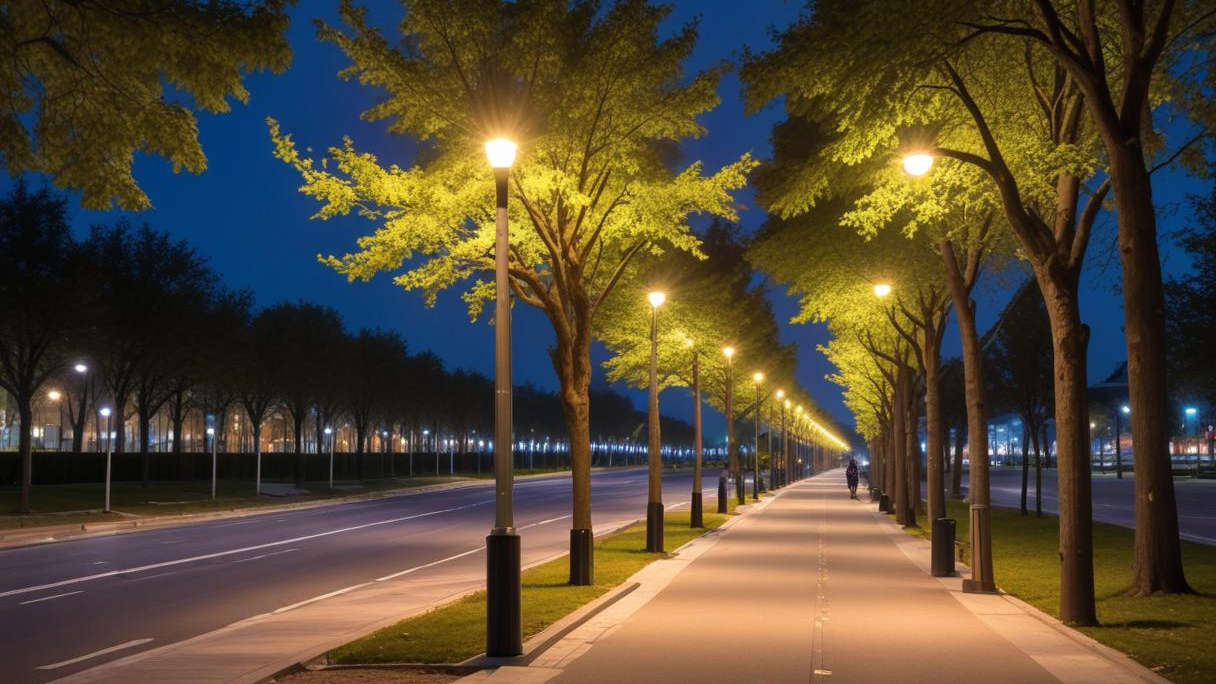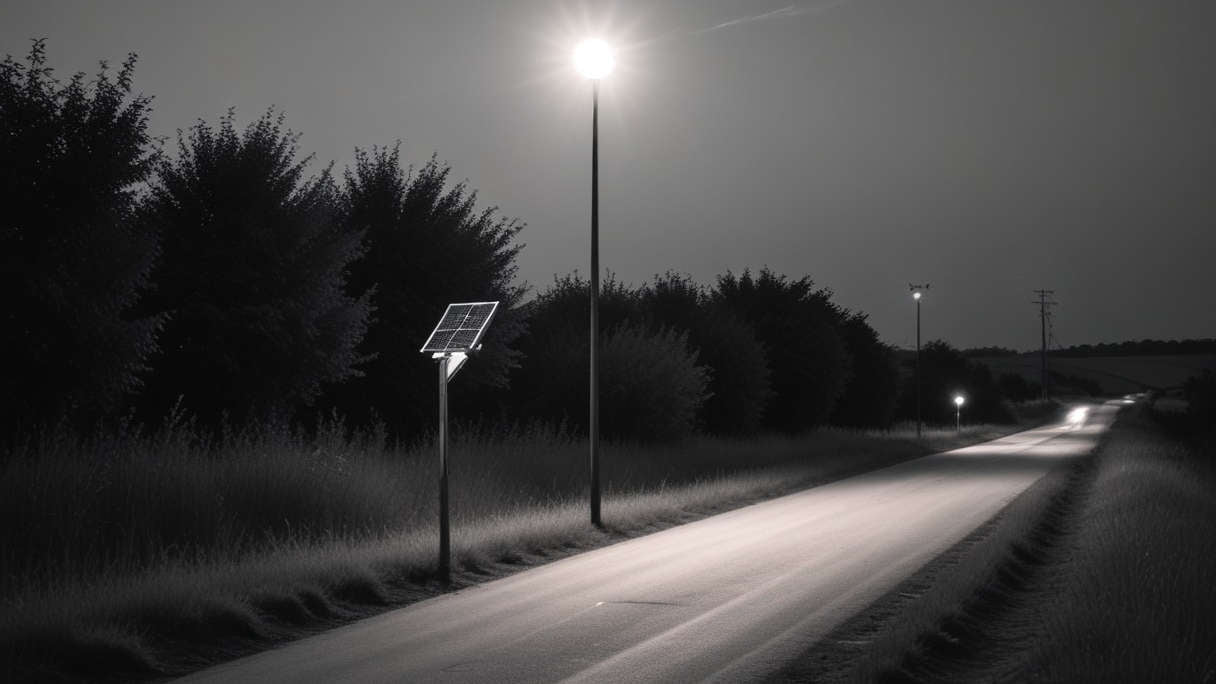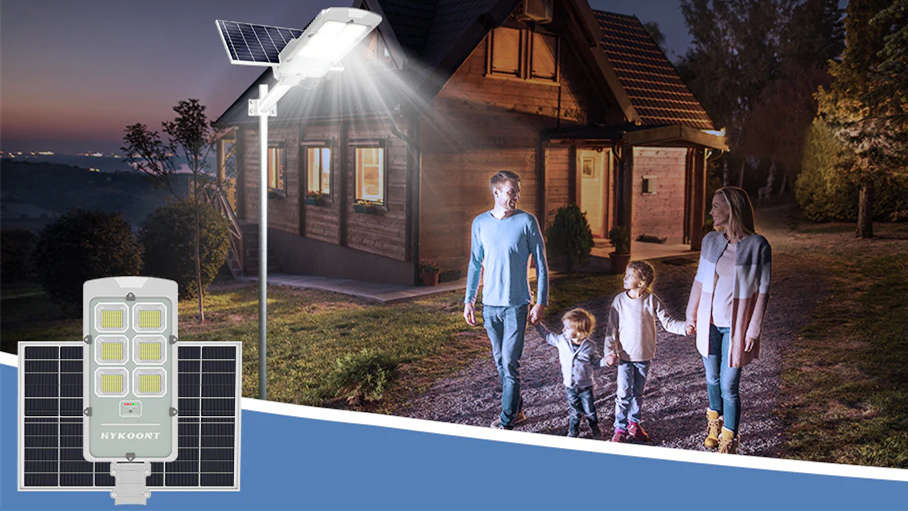As the world transitions towards sustainable energy solutions, solar street lights have become increasingly popular for both urban and rural applications. Solar street lights not only provide illumination but also offer an eco-friendly alternative to conventional lighting systems. Among the various designs available, two primary types stand out: split-type and integrated solar street lights. Each type has its unique advantages and disadvantages, making the choice between them dependent on specific needs and conditions. This blog aims to delve into the differences between split-type and integrated solar street lights, examining their respective benefits and drawbacks to determine which option might be better suited for various applications.
Understanding the Basics
Split-Type Solar Street Lights: As the name suggests, split-type solar street lights have separate components for the solar panel, battery, and light source. These components are usually connected through cables. The solar panel is typically mounted on top of the pole or on a nearby structure, while the battery is placed in a secure compartment, often underground or in a separate housing.

Integrated Solar Street Lights: Integrated solar street lights, also known as all-in-one solar street lights, combine the solar panel, battery, and light source into a single unit. This compact design simplifies installation and reduces the number of components exposed to external elements.

Advantages of Split-Type Solar Street Lights
-
Flexibility in Component Placement: Split-type solar street lights offer greater flexibility in terms of component placement. The solar panel can be positioned to maximize sunlight exposure, while the battery can be stored in a shaded or more secure location. This flexibility can lead to improved efficiency and longer battery life.
-
Ease of Maintenance: Since the components are separate, maintenance can be more straightforward. If one component fails, it can be replaced or repaired without affecting the others. This modular approach can reduce long-term maintenance costs and downtime.
-
Scalability and Upgradability: Split-type systems allow for easier upgrades. For instance, if a higher capacity battery or more efficient solar panel becomes available, it can be integrated into the existing system without needing to replace the entire unit. This scalability makes split-type solar street lights a more future-proof option.
-
Heat Management: The separation of components helps in better heat management. Batteries perform better and last longer when they are kept cool, and the ability to place the battery away from the heat generated by the solar panel and light source can enhance the overall system performance and lifespan.
Disadvantages of Split-Type Solar Street Lights
-
Complex Installation: The installation of split-type solar street lights can be more complex and time-consuming. It requires proper wiring and secure placement of each component, which can increase the initial setup cost and labor.
-
Aesthetic Considerations: The separate components can be less aesthetically pleasing compared to the streamlined design of integrated lights. In urban settings where appearance is important, this can be a significant drawback.
-
Potential for Theft and Vandalism: The exposed components, particularly the solar panel and battery, are more vulnerable to theft and vandalism. Ensuring their security can add to the overall cost and complexity of the installation.
Advantages of Integrated Solar Street Lights
-
Ease of Installation: Integrated solar street lights are designed for quick and easy installation. The all-in-one design means there are no external cables or separate components to connect, significantly reducing the setup time and labor costs.
-
Compact and Aesthetic Design: The integrated design is sleek and compact, making it more aesthetically appealing. This is particularly important for urban areas where the visual impact of infrastructure is a consideration.
-
Reduced Theft and Vandalism Risk: The all-in-one design reduces the risk of theft and vandalism. With fewer exposed components, the lights are less tempting targets for thieves and vandals.
-
Enhanced Durability: Integrated solar street lights are typically designed to be more robust and weather-resistant. The compact unit is better sealed against the elements, which can improve durability and reduce maintenance requirements.
Disadvantages of Integrated Solar Street Lights
-
Limited Flexibility: The all-in-one design means there is less flexibility in terms of component placement. The solar panel, battery, and light source must be positioned together, which may not always be the most efficient configuration for sunlight exposure and battery performance.
-
Maintenance Challenges: If one component fails, the entire unit may need to be replaced or sent for repairs. This can result in higher maintenance costs and longer downtime compared to split-type systems where individual components can be serviced separately.
-
Scalability Issues: Upgrading an integrated solar street light can be challenging. If technology improves or if higher capacity components are needed, the entire unit may need to be replaced, which can be less cost-effective compared to upgrading individual components in a split-type system.

Conclusion: Which is Better?
The choice between split-type and integrated solar street lights ultimately depends on specific needs and conditions. For projects where ease of installation, aesthetic appeal, and reduced risk of theft are priorities, integrated solar street lights may be the better option. They offer a streamlined, durable solution that is quick to deploy and requires minimal setup effort.
On the other hand, for applications where flexibility in component placement, ease of maintenance, and scalability are more important, split-type solar street lights are likely to be the superior choice. They provide the ability to optimize each component for maximum efficiency and can be more cost-effective in the long run due to their modular design.
In summary, both types of solar street lights have their unique advantages and disadvantages. The best choice depends on the specific requirements of the project, including factors such as location, budget, maintenance capabilities, and aesthetic preferences. By carefully considering these factors, decision-makers can select the solar street light system that best meets their needs and supports their sustainability goals.


































Leave a comment
This site is protected by hCaptcha and the hCaptcha Privacy Policy and Terms of Service apply.